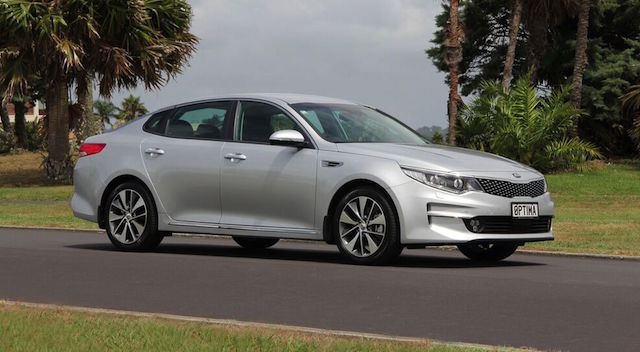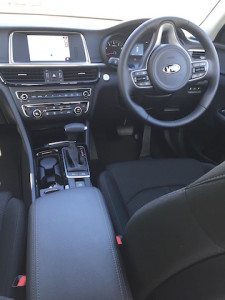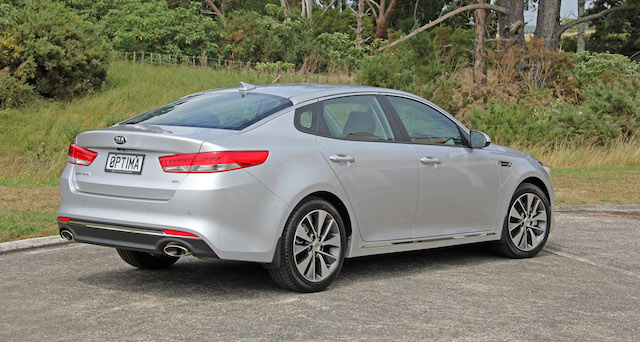
Kia’s outlet in New Zealand is one of the carmaker’s few global distributors offering a factory five-year warranty – most others, like right-hand-drive countries the UK and Australia, have a seven-year guarantee.
But don’t expect the 60-month pledge to change anytime soon, because there are not enough Kias on the road in New Zealand.
“We are not looking at seven years yet,” said Kia Motors NZ general manager Todd McDonald. He admits head office in South Korea has often quizzed him about adding on a couple of years – “but they haven’t done so for a while now.”

McDonald’s dealers nationwide need a bigger population of used Kias to take full advantage of the seven-year deal. The five-year factory warranty has obvious benefits: a three-year finance and service deal for a fleet/lease company, for example, leaves the used buyer with two further years on the car.
Seven years would allow two three-year warranty cycles for buyers – and another year’s guarantee for the third owner. But the Kia carpark has to grow somewhat before McDonald gets the seven-year itch.
So does the market for Kia’s latest offering, the fourth-generation Optima sedan. Sales of mid-sized sedans and station wagons in New Zealand over the past 13 years have been cut in half, from around 7000 in 2002 to 3500 last year. They are victims of the growth of SUVs.
Kia is well served with SUVs, its new mid-sized Sportage tying with the Mazda CX-3 as the best selling vehicle last month. Indeed, McDonald has already ordered more Sportages from the factory this year than the 1000 or so sold in New Zealand in 2015.
But the sedan segment is not a pretty picture for McDonald and hasn’t been since he launched the third-generation Optima in 2011. It looked sharp, received good reviews, but failed to generate much excitement against senior players like the Toyota Camry, Mazda6, Ford Mondeo and Europeans the Volkswagen Passat and, lately, the Skoda Octavia.
In four years Kia has sold roughly 600 Optimas, nearly all to private buyers. Now McDonald is out to muscle in on the fleet market with the new model, using tailored lease packages and the Optima’s lure, on paper at least, as the best value-for-money model in the segment.
The fleet market in New Zealand accounts for more than six out of every 10 new-vehicle sales. Kia will tackle it with two Optimas, the entry-level EX at $45,790 and the Limited at $48,990, both with a hugely impressive list of standard equipment.

For starters, the EX gets autonomous emergency braking (it instantly jammed on the brakes and stopped me colliding with a car that came out of a side street at speed), satellite-navigation, a seven-inch infotainment screen, adaptive cruise control, lane departure warning, gas-discharge headlights with high-beam assist (which adjusts the headlight range to the distance of vehicles ahead or oncoming traffic), 18-inch wheels, fog lights, and smart key.
The Limited adds an eight-inch infotainment screen, blind-spot detection, lane change assist, rear cross-traffic alert (valuable when backing out), ventilated front seats, cornering lights, tyre-pressure monitoring, sunroof, and a wireless phone charger. Also in the Limited is a higher-quality sound system using technology that improves the clarity of music files on a smart phone.
The new Optima is slightly bigger all round than the outgoing car, with a touch more space for occupants. Kia’s celebrated design chief Peter Schreyer has gone for an evolutionary look inside and out. The interior design is especially appealing.
Under the bonnet is a 2.4-litre direct-injection petrol engine mated to a six-speed automatic, both slightly revised versions of the drivetrain in the previous car. It delivers 138kW at 6000rpm and 241Nm at 4000rpm.
A brief drive revealed that the new model is more refined and feels lighter on its feet than the outgoing car, perhaps helped by a modified suspension set-up at the rear that, like the front, was tuned by Kia for Downunder conditions.
The carmaker’s greater use of high-tensile steels and 119 metres of adhesive bonding also helps here. The outgoing Optima had 21 metres of adhesive bonding – the class-leading Mercedes-Benz C-Class has 135 metres.
A standout feature of the 90-minute test drive was the Optima’s revised and nicely weighted steering. The previous model used an hydraulic rack with the Hyundai-Kia affiliate’s push-button FlexSteer device; the new one uses electric power steering, a first for Optima.
FlexSteer allowed the driver to select the level of assistance they preferred: making it heavier or lighter. Optima has done away with the manual FlexSteer system and instead has built its electronic functions into the drive mode. It works better that way.

